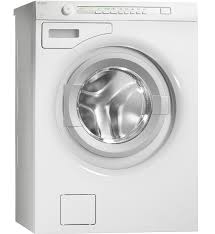What Are The Most Energy-Efficient Washing Machines?
EECA.govt.nz reviewed a number of washing machines available in New Zealand. Below is a summary of their findings.
Compared to top loaders, front loaders use much less water and energy when used on warm-wash settings. Filter on cold wash rated to find models that offer a cold wash cycle – hot washes cost significantly more.
Think about annual running cost – customise your usage on the slider below to see the impact on annual cost to run (to effectively compare, ensure your usage is set consistently for each product).
The following information is only a guide to help you compare products. Product details and efficiency ratings are supplied by New Zealand manufacturers and importers who have chosen to register products. Annual running costs are calculated using an estimated electricity price of $0.25/kWh. Click here to read more about the calculations.
Washing Machines By Energy Rating
ASKO W6884 ECO W

Asko front-loader
This machine had a very low annual running cost of just $38. Its very low energy consumption measured as kWh per 365 hours (kWh/365) for a warm-wash was only 151. Low energy usage is certainly a key component in determining the running costs over a year. Asko also had the second-lowest energy consumption washing machine.
The second-placed brand was AEG with its LF8C9412A machine. A warm-wash energy consumption of 210 kWh/365 helped produce an annual running cost of only $52.
The ELECTROLUX EWW14013 was the third-placed brand model for energy usage. Its warm-wash energy consumption was 214 kWh/365 producing an annual running cost of $53.
The top 12 washing machines all hand a 5-star energy rating. However, all of these machines are front-loading washing machines.
All of these machines are front-loading washing machines.
You can get more details from the EECA website here.
Highest Energy Consumption Washing Machines

Tuscany top-loader
By contrast, those with the highest annual running costs are top-loaders. Here are a few examples.
The TUSCANY TW-6KG uses 544 kWh/365 on a warm-wash giving an annual running cost of$136.
Fisher & Paykel, the popular New Zealand brand, had the washing machine with the second highest energy consumption. Its FISHER & PAYKEL MW513 uses 499 kWh/365 on a warm-wash resulting in an annual running cost of $124.
Rounding out the bottom three is the TRIESTE TRWTL-6.1 consuming 498 kWh/365 on the same warm wash and producing annual running costs of $124.
Summary
While absolute efficiency or annual running costs are the most important issue for some people, there are other considerations. For example, your home might not have the space to use a front-loader, or you might need bigger washing loads if you have a larger family. There is no single answer. It will depend on your circumstances.
Repairing Washing Machines
While washing machines are much more reliable than they used to be, what is inevitable for some people is that they will need to call in a washing machine repair service. If you need to find a local washing machine repair company, go to this site and search for your local service. You can look-up with either the town name or a postcode.
By contrast, those with the highest annual running costs are top-loaders. Here are a few examples.
If you need Onehunga appliance repairs in your area click the link.

